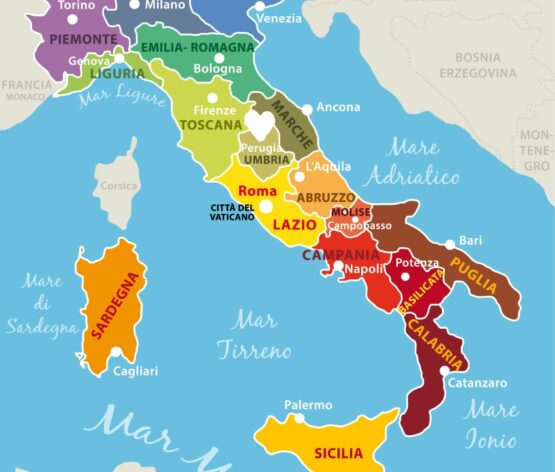
GUIDE
Umbria Region, Italy
Umbria is a hilly and picturesque region in central Italy and is one of the few regions with no access to the sea. With an area of 8,456 sq. km and a total population of only 900 thousand inhabitants, it is one of the smaller regions too.
From a historical perspective, the Umbria region was populated by Umbri people who were later conquered and controlled by the Lambards before partly falling under the Pope's control. That's when Orvieto Cathedral started being built.
From an economic perspective, the region mainly produces car components, chemicals and ceramics. Maiolica products widely recognised worldwide for their unique glazing, artisanship and colours.
Medieval Town Of Orvieto
Orvieto is a medieval town (as well as a commune) in the Province of Terni, the southern part of Umbria.
It is very popular with tourists coming here to appreciate its beauty, history, religious heritage, and craftsmanship. Hence you might have heard about it before.
Current artisanship that people see when walking through its historical streets and in its shop windows has a lot to do with the town's history and contribution to Italian ceramics.
Let's have a closer look at what makes this town so unique and how it contributes to the richness of Italian culture.
Cathedral of Santa Maria Assunta (Duomo di Orvieto)
Visible from miles away, Orvieto Cathedral is the most prominent building in the area. It is one the most visited tourist attraction thanks to its history and impressive design that made it part of the "The Most Beautiful Churches of Italy" list.
Pope Nicholas IV hired 33 architects to start building the Cathedral of Santa Maria Assunta in 1290. Lead by a. start architect at the time, Lorenzo Maitani, 150 sculptors, 70 painters and 90 mosaic's specialists built this church for over 100 years.
The unique Orvieto decorations from that time can still be seen on the church today. Local artists still apply this unique Orvieto style when decorating ceramic kitchenware sold in the local shops.
What Is Made in Orvieto
Orvieto commune is mainly focused on tourism, production of wine and manufacturing of ceramics.
The local wine is protected by DOC (Italian origin certification) for its uniqueness. Most sommeliers will know white wine Orvieto Classico, but locals also make some reds under Rosso Orvietano. For a rare wine experience, seek out Orvieto Abbaccato, a semi-sweet wine – the type made in the middle ages.
To enjoy the wine to its fullest, combine it with the traditional local dish – truffle pasta. You will find it in most local restaurants.
And, of course, there is Orvieto ware. It is tin-glazed earthenware and usually mostly come in purple (locally extracted die), green and most recently, blue. The city has many workshops, with each adopting various designs and styles.
Orvietano - Unique Decorating Style
In Orvieto, production of the ceramics reached its heyday between the 13th and the 15th centuries, partly thanks to the largest project ever in the city – construction and decoration of the Orvieto Cathedral.
It required a lot of artisans and innovation to fulfil the needs of a colourful church project. That's when local craftsmen further advanced innovation in colouring. From traditional brown, people finally had options for white enamel, greens and blues.
The Vascellari (local masters in ceramics) became famous for their drawings of birds, fish, animals and even beasts with human heads. This form of art was passed on from generation to generation and can still be seen on the maiolica ceramics made in the kitchenware today.
Here are some examples of authentic Italian kitchenware from Orvieto:
MADE IN ITALY
An authentic Italian coffee container is worth gold for many coffee drinkers. It adds a lot of character to the kitchen and morning brewing routine.
€149
MADE IN UMBRIA
An everyday item like kitchen utensil holder can be so much more special. Especially considering that it is so visible every time you are in the kitchen.
€139
MADE IN ORVIETO
An olive oil dispenser is often used on the table when you are serving your guests. So why not have a bottle with a great heritage story to tell.
€129
Visit our shop to see more unique Italian products from Orvieto-->

Deruta - City Of Ceramics
Deruta is often referred to as the "ceramics city" as there are many artisans making Maiolica wares dotted around the city.
As you can see from the welcome sign, they proudly display a short history of the town carved into the stone just outside the city's gates.
The city was thriving as the Italian centre of Maiolica ceramics between the 13th and 16th centuries. Today ceramics still play a big part in city's life thanks to the exports and tourism.
Deruta craftsmen are highly praised for their skills and decorative styles, which are unique to the commune. Hence it is often referred to as "Deruta Ceramics".
Discovering Umbria
IN SUMMARY
To discover Umbria and its fascinating culture and offerings, you need a long holiday. But it will be an experience full adventures and great memories.
For those you can't visit just yet, you can experience it through artisan creations and wares you can buy. It will add more character and colour to any home.
Italy makes a lot of unique things. Learn more about Italian manufacturing, design and trends.
Discover Sweden without leaving your home. Interesting and unusual is what we are looking for.
It is called 'Big Corkscrew' for a reason. Its Italian craftsmanship is impressive; and this thing is huge.
We spent years searching the web, artisan shops and visiting variety of makers in Europe. You welcome.























